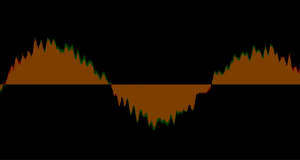FFmpeg is a cross-platform command line interface (CLI) audio editor and video editor with a long range of possibilities for recording, streaming, and converting media files to your preferences.
The easiest way to install FFmpeg on CentOS is with the EPEL (Extra Packages for Enterprise Linux) repository, which provides more software packages than are available in CentOS by default, and RPM Fusion which includes the FFmpeg repo.
The RPM Fusion repo for FFmpeg is behind the latest version available. For the latest FFmpeg version, you’ll need to install FFmpeg from source code or email our 24/7 Live Support to request a free installation on your managed VPS or dedicated server.
Whether you’re trying to figure out how to install FFmpeg on cPanel servers or unmanaged cloud servers, below we’ll cover how to:
Install FFmpeg on CentOS
To install FFmpeg on CentOS with EPEL and RPM Fusion:
- Log in to SSH
- Install the the EPEL software repository:
sudo yum install epel-release
- Install RPM Fusion:
sudo yum localinstall --nogpgcheck https://download1.rpmfusion.org/free/el/rpmfusion-free-release-7.noarch.rpm
- Install FFmpeg with YUM:
sudo yum install ffmpeg ffmpeg-devel
- Check your FFmpeg version:
ffmpeg -version
Rebuild your secure website today with our VPS Hosting.
Using FFmpeg

Want to play with the newly installed FFmpeg media editor? Here are a few options on getting started with FFmpeg.
- Convert multimedia files with FFmpeg
- Create visual spectrum videos with FFmpeg to upload to YouTube, Vimeo, and other online video platforms
- Look into FFmpeg GUI applications for your operating system (OS) to ease into learning how to make the most of FFmpeg
- Discuss advanced features with other FFmpeg users in official internet relay chat (IRC) channels and forums
After you learned how to install FFmpeg in cPanel accounts, what tasks did you learn to get started? Let us know in the comments below.
